17th Century Flemish Glass
Flemish painted glass as seen in these examples from St Bartholomew's Church, Haslemere, had its origin in the 15th and 16th centuries. Early European mediaeval stained-glass of the Gothic period, with its creation of architectural light and atmosphere within a cathedral setting, is in striking contrast to these small painted glass panels which in their depiction of biblical, heraldic, natural or classical subjects could be termed 'easel' art, better able to explore the human complexities of the Renaissance. The panels were produced in the Low Countries by highly regarded draftsmen and artists (influenced by the work of contemporary artists such as the engravings of Albrecht Durer) throughout the 16th and 17th centuries. This is considered to be the golden age of Flemish painted glass which became a luxury product sold across Europe, destined for the windows of public buildings and private houses alike. Indeed, such glass was itself depicted within the genre paintings of the 17th century Dutch artist Vermeer and his contemporaries.
Trading links in the late 15th century had brought an influx of Flemish art and glaziers to England, but with the political and religious turmoil of the 17th century and its puritanical destruction of English church glass, any such trade would have become difficult. Flemish glass production continued however for wealthy clients in the Northern Netherlands into the early 18th century. England's rediscovery of these panels in the first half of the 18 th century was in no small way due to the advocacy of Horace Walpole: his collection of hundreds of historic painted glass panels in the 1750's and '60's filled his 'Gothic' house Strawberry Hill, Twickenham, to jewel-like effect. Agents scoured the Low Countries for these treasures some of which were retrieved from demolished houses. Walpole's enthusiasm helped create a fashion for Flemish glass amongst an aspiring middle class that may well have influenced this Haslemere collector of biblical glass, Thomas Sanderson. Such a collection would have been made not only for its artistic interest and charm, but out of the piety of the individual, and as a visual aid to religious education within a domestic setting.
St Bartholomew's Church Flemish Glass
The Flemish Glass in St Bartholomew's Church is of 17th Century origin. The glass was brought to Haslemere by Mr Thomas Sanderson of Kent who married Mary Shudd of The Lodge (now the site of Haslemere Educational Museum)
The four panels with oval frames are the four gospel writers

Placed in East Window
Following the death of Sanderson and his wife, the glass was inherited by their daughter Mary Ann and given to St Bartholomew's Church, Haslemere, on or shortly after her marriage in 1797 to the Rev Robert Price.
The panels were placed in the East window as can be seen in this painting by E Hassell in 1828.
It looks like the Commandments boards were on either side.

The West Window
The panels were moved to the West Windows when the church was rebuilt in 1870
The Garden of Eden and Noah's Ark were moved to the Bell Tower
Note the perspective frames which were retained
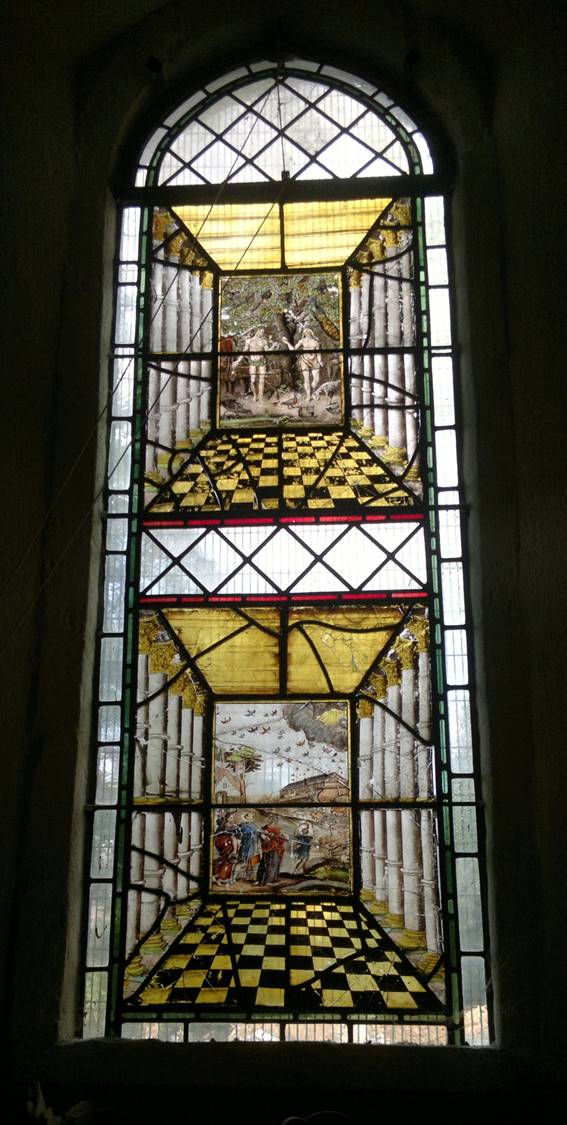
The Remaining Panels
The remaining 6 panels were placed in the West Window with their frames replaced by a red border.
It was a strange place to locate them as the panels are about A4 size and so not easily seen so high up. The panels were damaged by weather and stones. Various repairs were attempted over the years.
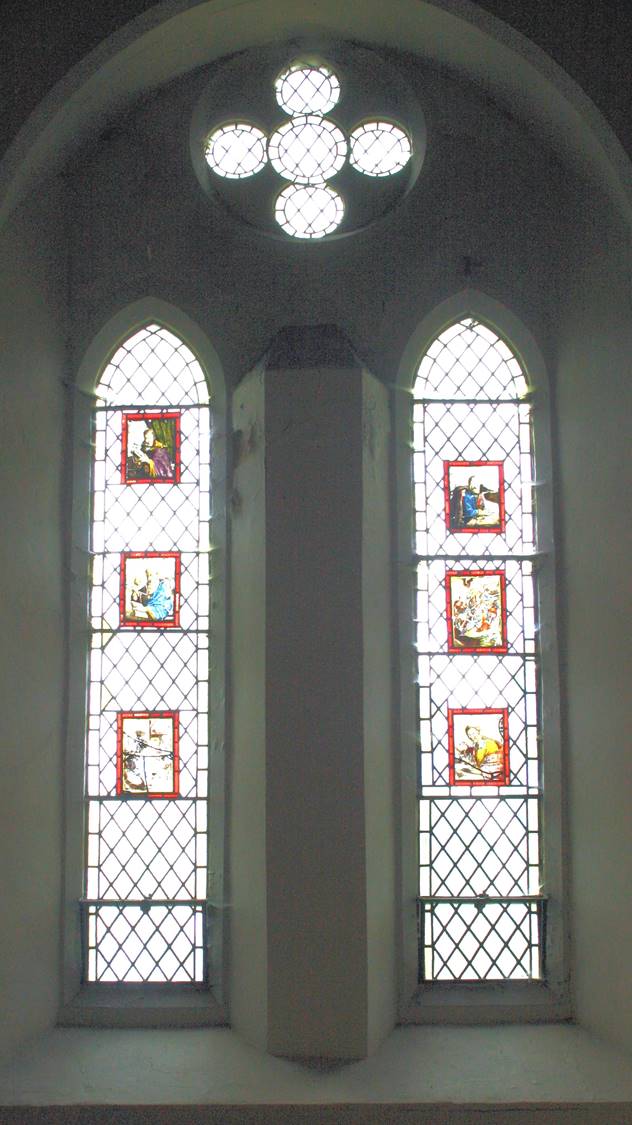
The Restoration Process
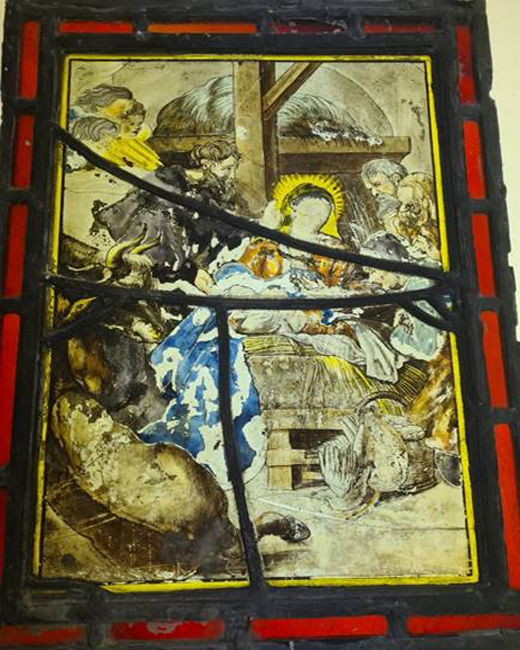
Some of the original panels were repaired with lead cames
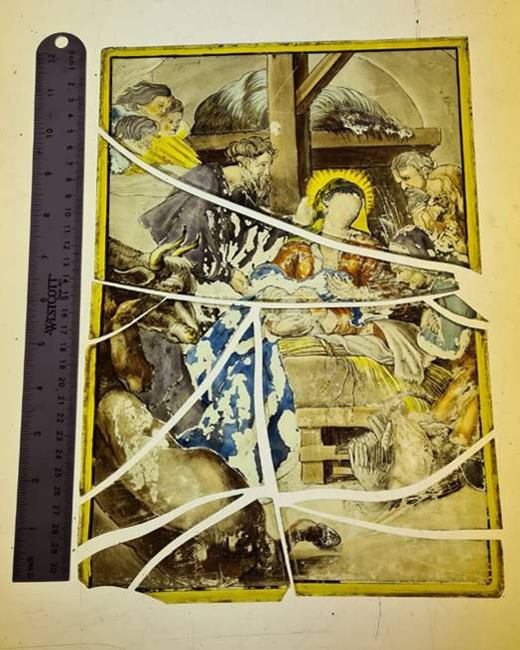
The pieces were first separated and cleaned
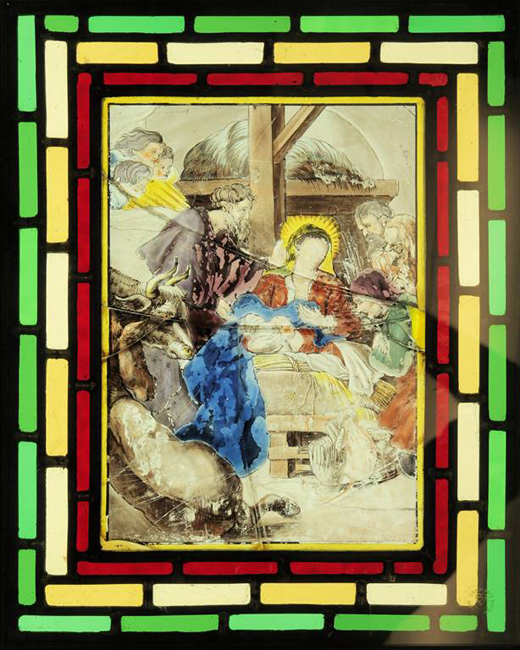
The pieces were then edge bonded and the surround added. The panels were then 'sandwiched' between two toughened glass sheets
St John has cleaned up well
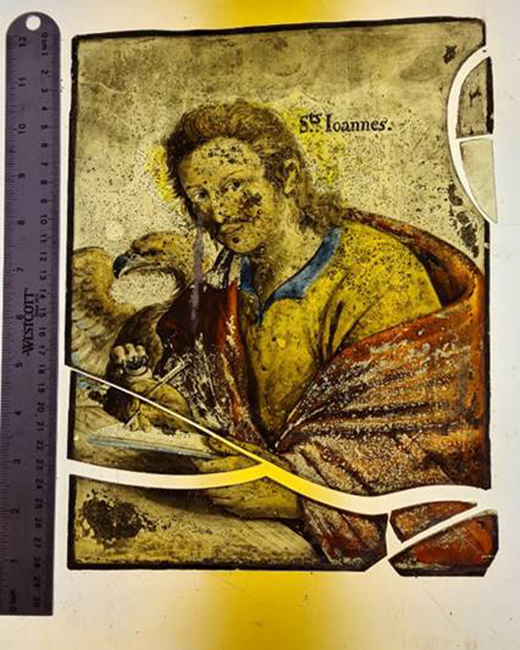
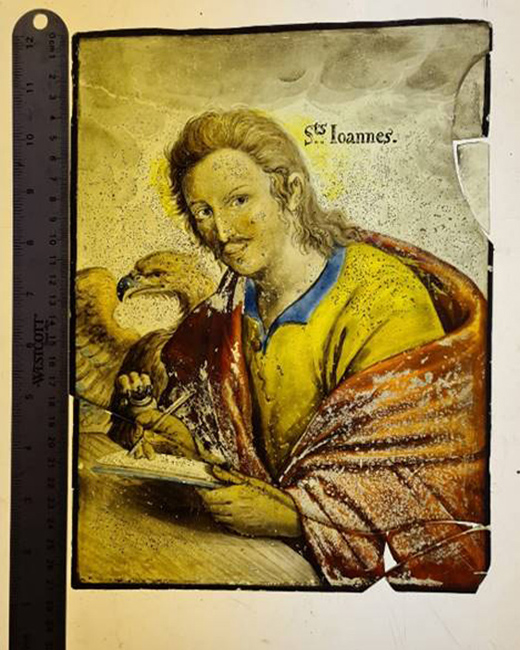

St Matthew had many fractures
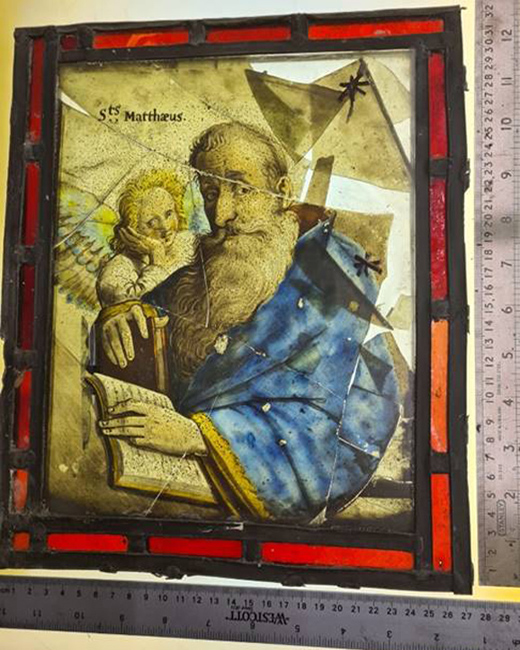
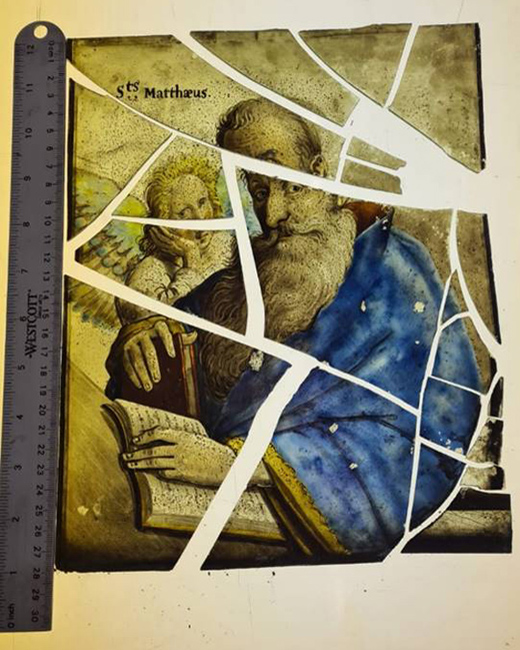

St Luke has restored well

St Mark still shows some fractures

The conversion of Saul has wonderful detail
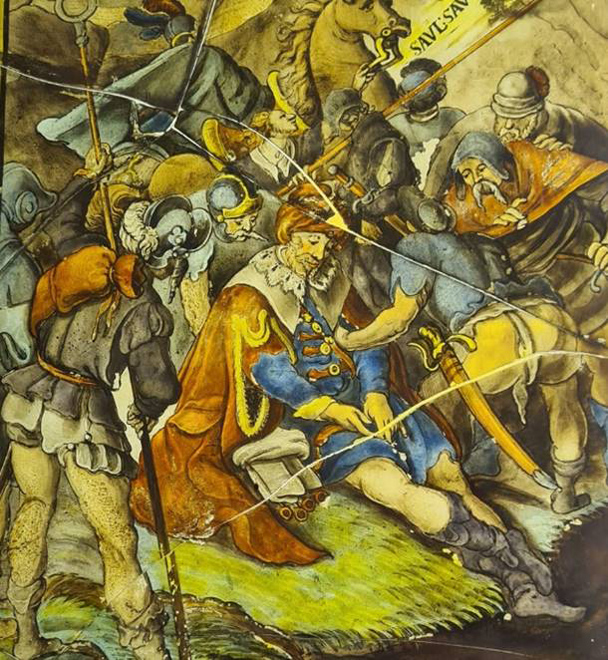
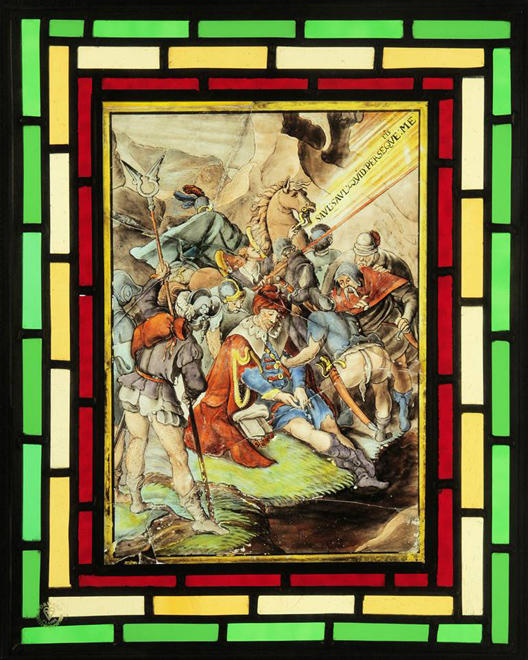
An additional problem was discovered with the panels in the Bell Tower
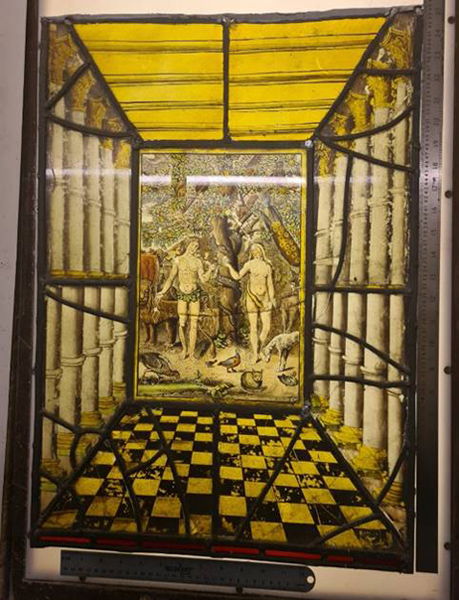
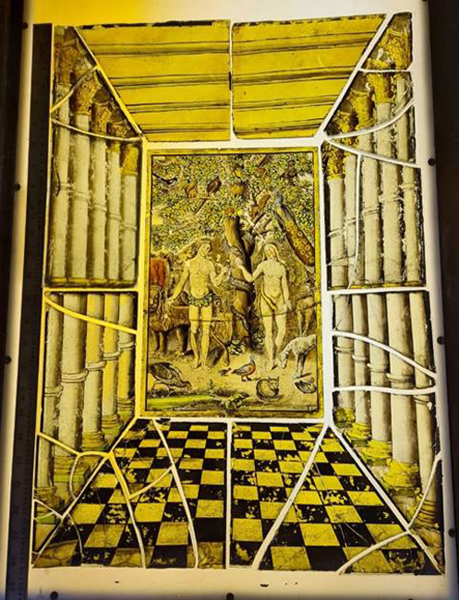
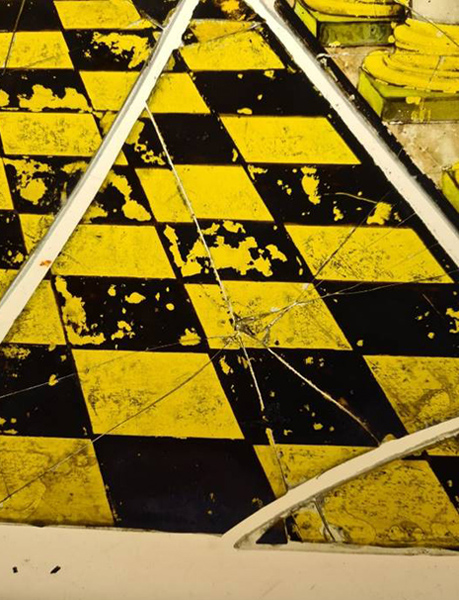
The damaged panels were glued to plain glass to hold them together.
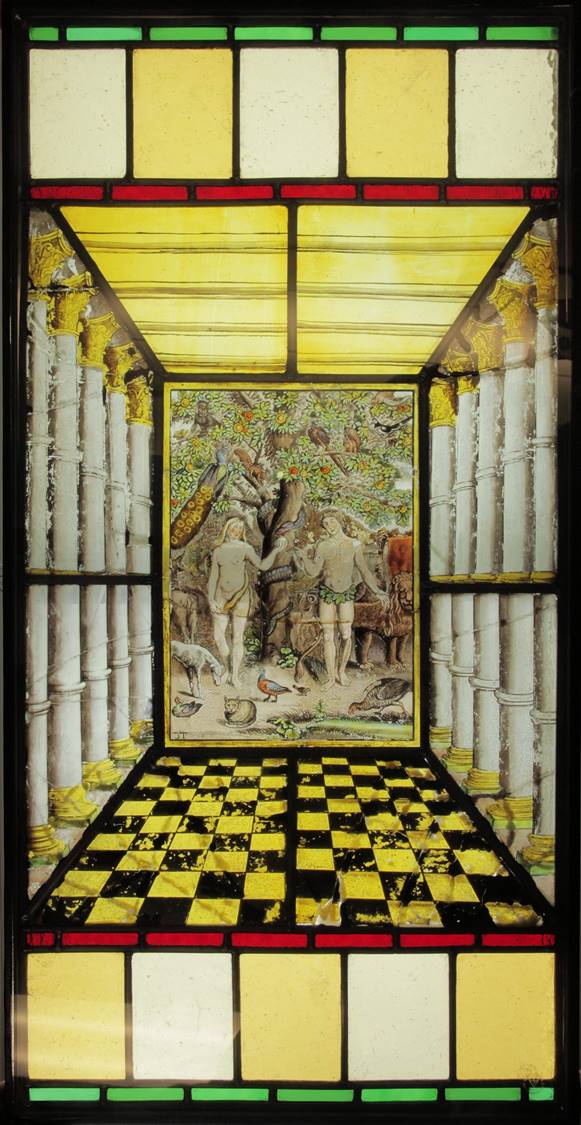
The restorer was able to un-glue the central pictures but some of the surrounds were so badly splintered it was not possible for them to be un-glued.
The size of the final panels was determined by the way they will be installed in a wooden cabinet.
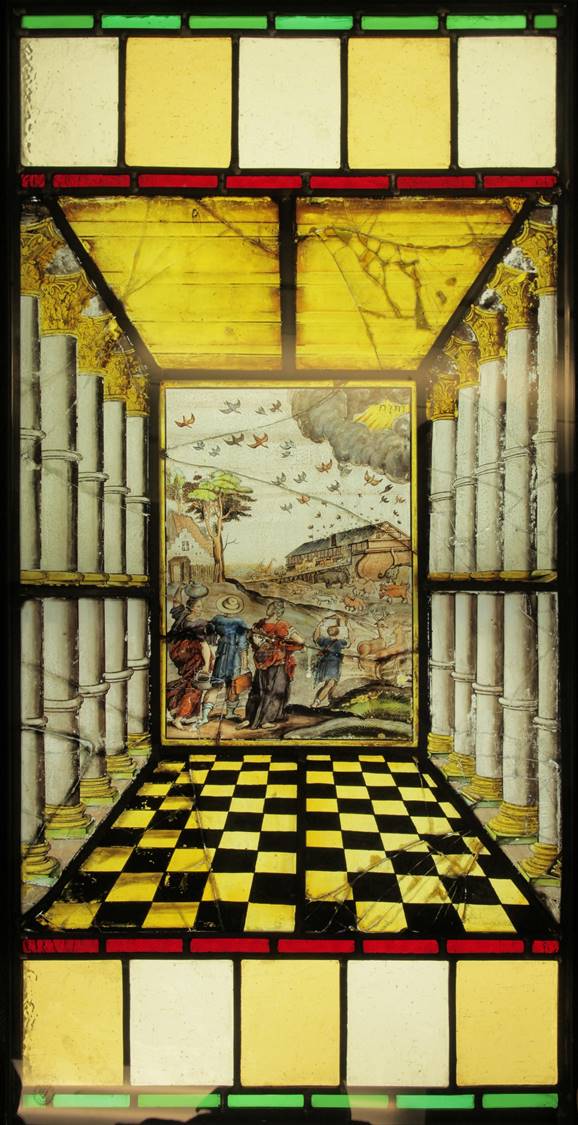
The Prayer Chapel/Children's Chapel
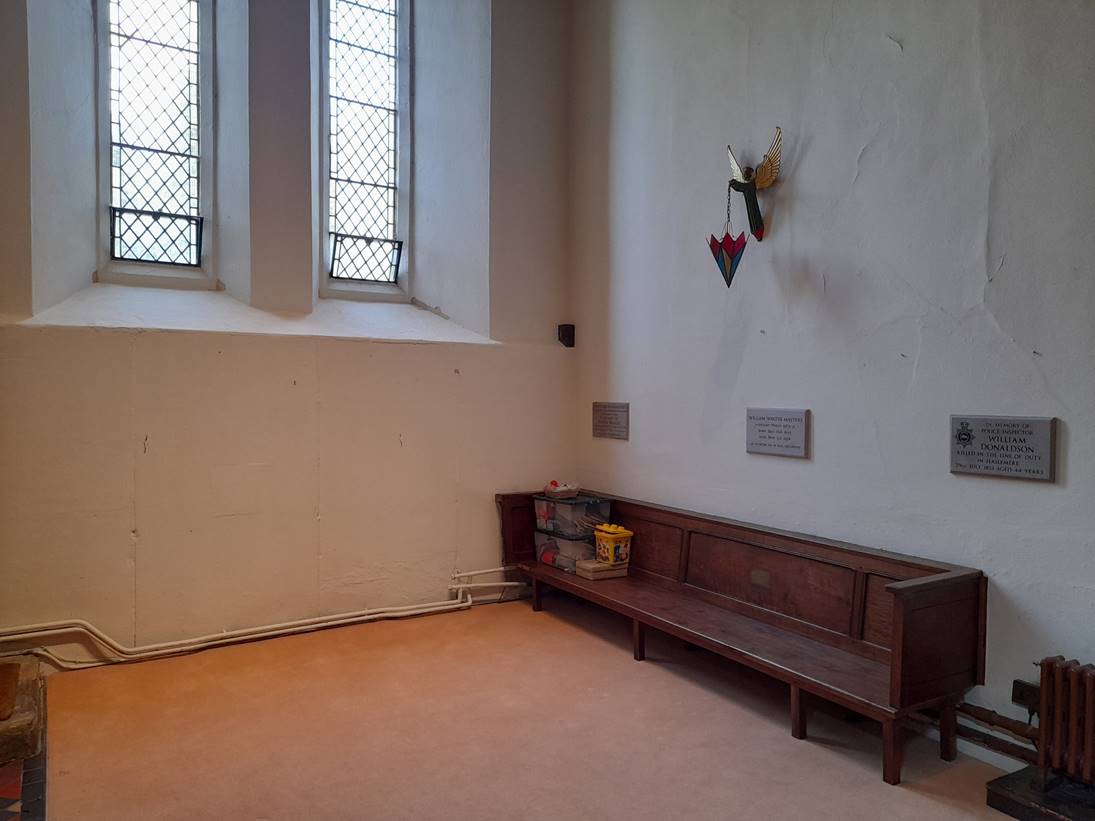
The new cabinet will be installed in the children's chapel below the west window.
The panels will be a teaching aid for children's worship.
Note also the low bench, designed for children and given in memory of Anne Bridger in 1931 (of Bridger's band)
The Restoration Plan
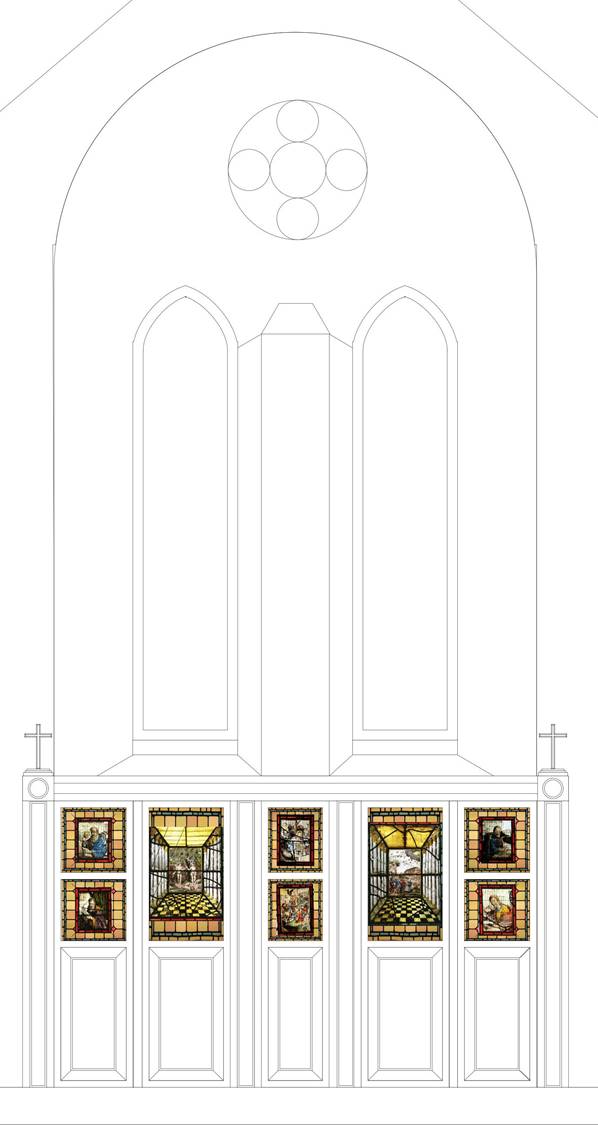
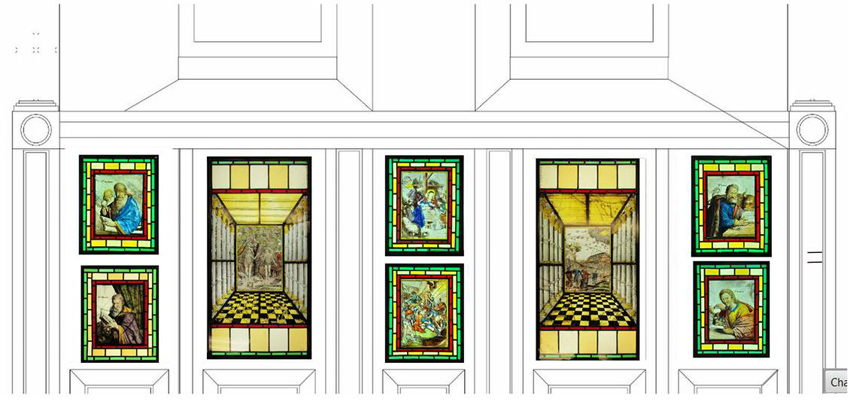
The glass panels will be displayed in a custom built cabinet, back-lit with LED (daylight) lighting panels. The two larger panels will line up with the west windows above
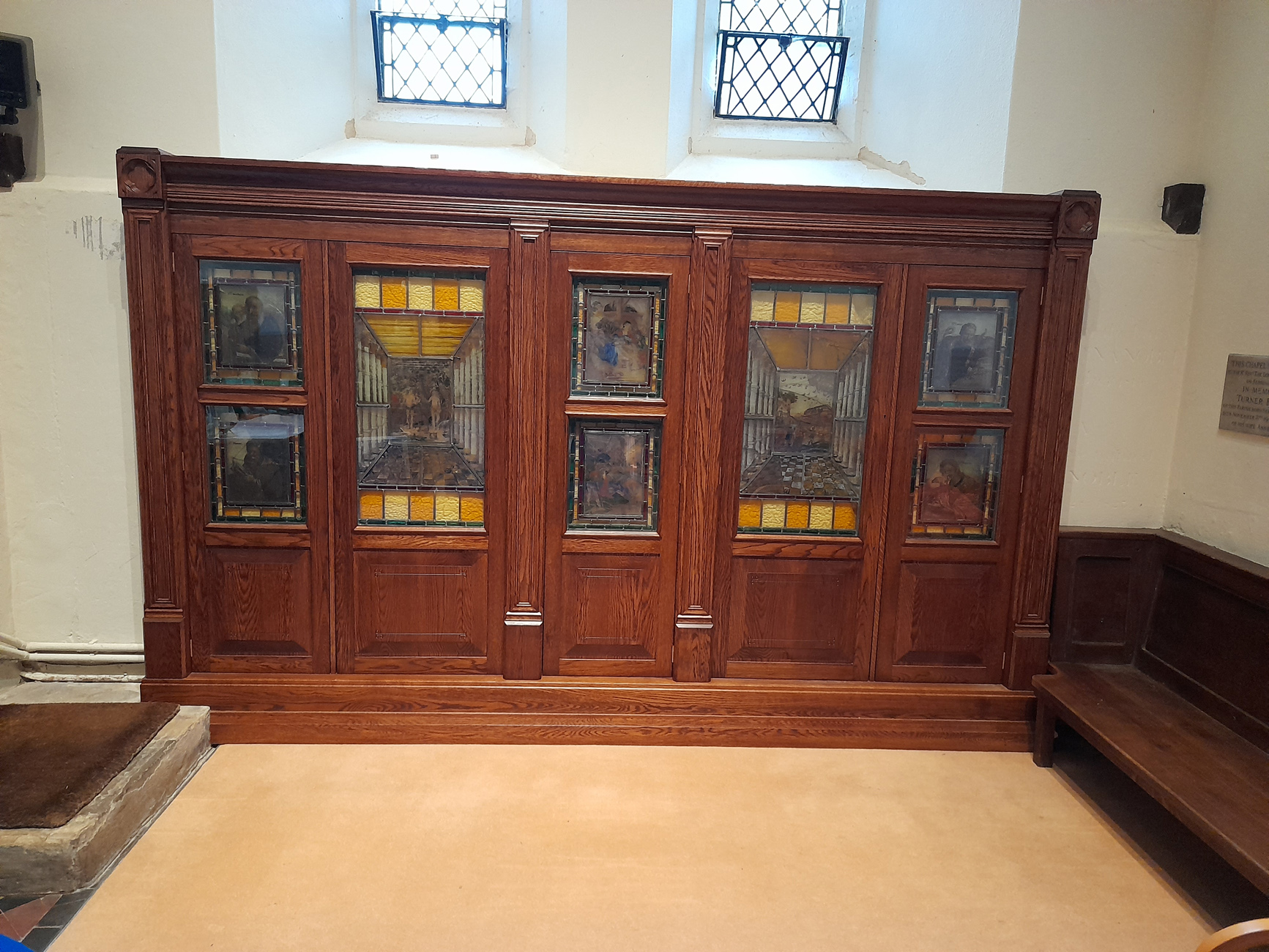
With the back lighting off
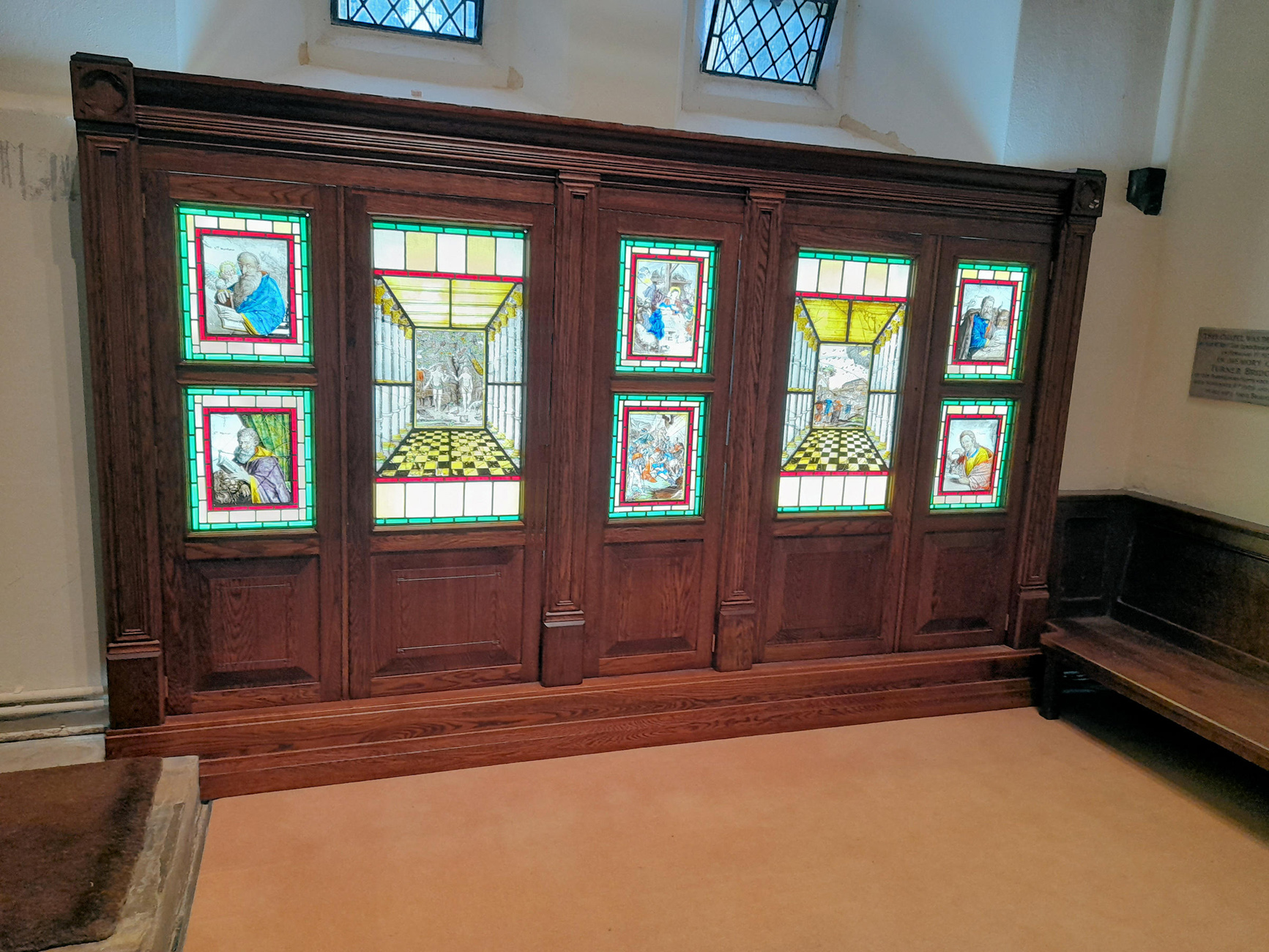
With the back lighting on
Final Steps
Work on constructing the cabinet starts in October 2021. It is hoped that the work will be complete by Christmas. It will then be a remarkable and attractive link to the history of the Church
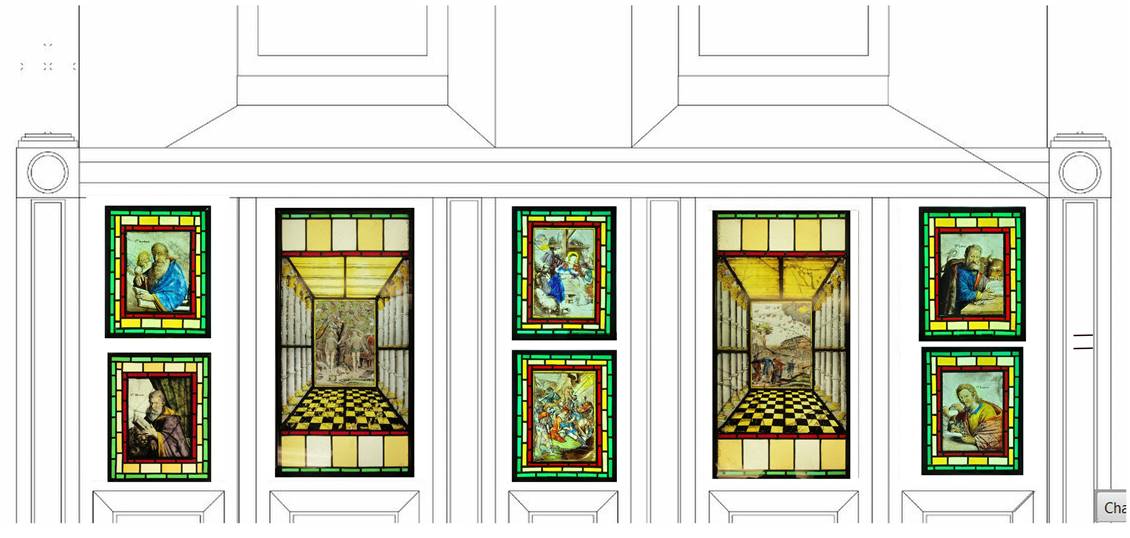
Photographic credits to Mark Harvey of Park Glass, Will Pattenden and Hamish Donaldson. Cabinet concept design by Sahran Abeysundara
